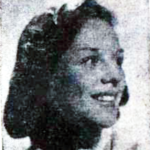Carol Hughes signed with Roulette Records in July 1957 when she was about fourteen years old, placing her on the same roster as fellow teen rock and roller Frankie Lymon. She cut several sides, all of which were teen-oriented. Her version of “Lend Me Your Comb” came out close on the heels of Carl Perkins’s (Roulette actually publicized hers as “the Original.”) She also appeared on several television shows, including the Arthur Murray Dance Party.
Biographies
Jackson, Cordell
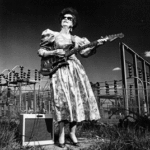
Jackson was born in 1923 in Pontotoc, Mississippi. The daughter of a violinist, Jackson learned to play several instruments as a child, including guitar, piano, harmonica, mandolin, and banjo. She recalled in an interview given to the Christian Science Monitor in 1991 that she had always been told growing up that “girls don’t play guitar”—but she did.
Jackson, Wanda
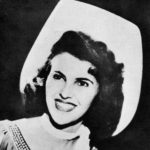
Wanda Lavonne Jackson was born in Maud, Oklahoma, in 1937, and spent her childhood in Oklahoma and California. She recalls that her father, himself an amateur musician, gave her her first guitar when she was about six and then later—when she showed a love for pop music and the “girl singers” of the time—he provided her with a piano and lessons. Her first public performances were for a program on KLPR AM radio out of Oklahoma City, where local disc jockey “Cousin” Jay Davis would showcase local talent.
James, Etta
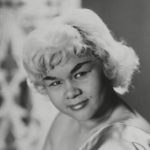
Etta James was born Jamesetta Hawkins in Los Angeles in 1938. James’s mother was still a high school student when she was born, and she was largely raised by an aunt and then by a foster family. At five years old, she began singing at the St. Paul Baptist Church, famous for its Echoes of Eden gospel choir. She began taking voice lessons from the choirmaster, James Earle Hines, and piano lessons from his wife. “In the forties,” writes James in her autobiography, “word got out that a girlchild in the St. Paul Baptist could sing like a full-grown woman, with grown-up feelings and strength. Joe Adams’s radio broadcasts helped spread the news, and it didn’t take long before I was famous.”
Laurie, Linda
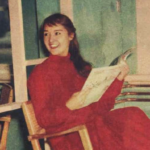
Born Linda Gertz in New York. Laurie was a high school student in Brooklyn when her ability to create trick voices caught the attention of indie label Glory Records, which rightfully saw in her potential for a hit novelty record. “Ambrose #5,” released in 1958, was a sensation. Laurie wrote the song herself, and speaks the parts of both a masculine and a feminine character who are walking through a dark subway tunnel. The record reached #58 on the Billboard Hot 100; its success helped to land her a spot on on rock and roll package shows.
Lee, Addie

Addie Lee is the stage name of Adrienne Lawner. Lawner worked as a secretary at the publishing company Monument Music, owned by Larry Uttal, when she recorded for Roulette Records in 1957.
Lesley, Alis
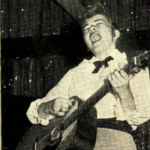
“Alis Lesley, the female Presley” was a stage name used by a teenage performer from Arizona between 1956 and 1959. A biography printed in a program book from her 1958 appearances in Australia indicate that she was born on April 20, 1938, in Chicago, and then moved to Phoenix, where she studied theater in school. The biography also indicates that Lesley was discovered by Kathryn Godfrey, Arthur Godfrey’s sister, and began making local media appearances shortly thereafter.
Lewis, Edna

Edna Lewis was a songwriter who worked in New York during the peak of the “Brill Building era” of the late 1950s and early 1960s, with more than fifty publishing credits to her name. She co-wrote several major hits including “Lipstick on Your Collar” (Connie Francis) and “Judy’s Turn to Cry” (Lesley Gore).
Lynn, Lorelei

Lorelei Lynn and the Sparkles seem to have cut one single, “Rock-a-Bop” backed with “Bobby,” on the small indie label Award out of Oakland, California. Billboard called it “a wild disk.” Rock-a-Bop features a blistering saxophone solo and Little Richard-esque interjections from a male backing vocalist.
Martin, Janis

Janis Martin was born in 1940 in southern Virginia. She had a precocious start in music: by the time she was a preteen, she could be heard on WDVA’s Barndance in Danville, Virginia, and on Old Dominion Barndance out of Richmond. Although she found her earliest performing opportunities in country music, she harbored a love for R&B. “Ruth Brown,” she told the Washginton Post in 1990 “was my favorite. … I don’t know what it was—the rhythm, the feeling—it was just my kind of music.”

